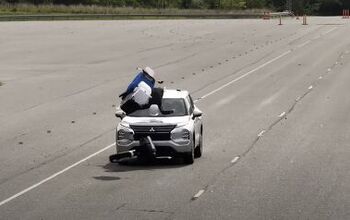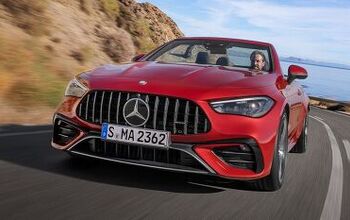Mercedes Charts Electric Course for Vans, Bringing Luxocruisers Stateside

If you’ve travelled abroad and marveled at rigs like the factory-built luxury vans (that aren’t industrial-grade Sprinters) tasked with shuttling and chauffeuring, you may be interested to learn Mercedes-Benz is planning to sell such machines in America. In addition to setting its sights on that relatively untapped market in this neck of the woods, Stuttgart is readying the roll-out of its all-electric van architecture.
First, the people carriers. Mercedes-Benz refers to them as “privately positioned midsize luxury vans”, referring not to the position of ones privates whilst driving the things but rather the intent of these vans to serve as luxury transportation for humans. This differs from converted Sprinter vans, some of which have sumptuous interiors but retain the underpinnings of a utilitarian machine designed to move cargo. On certain roads, this is evident.
During overseas hops, we’ve ridden in numerous examples of the passenger vans Merc is planning to bring here and can tell you the difference between those rigs and a converted Sprinter is stark. It surely won’t take long for livery services and the like to fill their fleets with these vans, meaning we should expect to see them in the perpetually congested pickup/dropoff lanes at LAX in short order. Mercedes believes there is growth opportunity with the V-Class, and they’re probably correct.
Underpinning these efforts will be M-B’s new VAN.EA architecture, an all-electric platform that will find homes under private vans and cargo carriers alike. Merc has already been dabbling in this arena with the eSprinter (which is different from the V-Class), installing a 113-kWh battery in a pre-production example and driving the thing from Vegas to Long Beach without stopping to recharge on the 275-mile journey. Specifics on the VAN.EA platform will appear closer to its expected introduction in 2026.
While some will mutter about range and charging opportunities for long distance deliveries, the fact remains that – in large centers – many cargo vans and passenger vans find themselves in environs suited for all-electric driving. Being stuck in LA traffic means plenty of regeneration opportunities instead of idling away fuel stores, while the van’s downtime will likely coincide with off-peak grid hours when electricity is cheaper for charging. Sure, there are numerous companies whose vehicles are operating 24/7 (if the wheels ain’t moving, the van ain’t making money) but an all-electric van will absolutely be the right fit for some customers.
[Images: Mercedes-Benz]
Become a TTAC insider. Get the latest news, features, TTAC takes, and everything else that gets to the truth about cars first by subscribing to our newsletter.

Matthew buys, sells, fixes, & races cars. As a human index of auto & auction knowledge, he is fond of making money and offering loud opinions.
More by Matthew Guy
Latest Car Reviews
Read moreLatest Product Reviews
Read moreRecent Comments
- Redapple2 So Mazda and Subaru both have strong ties/relationship with Toyota? Good.
- Tane94 what a great line! Kudos!!!"They have multiplied like meth-addicted rabbits on a three day bender."
- Tane94 Former CEO Alan Mullaney brought back the Taurus nameplate and ditched the CVT for a regular automatic tranny. Both were good moves. Sadly few 2008 and 2009 Taurus models were built as the Great Recession began.
- Tassos FINALLY, A HYBRID SUV FOR SERIOUS DRIVERS™️. BIDEN MAZDA BREAD VAN ON STILTS
- Tassos Call me when 20 year old AMG models are available with the BLUETEC DIESEL ENGINE. I’d like one that was TOTALLED AND REBUILT during the SUPERIOR 2016-2020 TERM. Only LOSERS drive cars that were not salvaged and rebuilt in that time frame.



































Comments
Join the conversation
Minnesota > Stuttgart
V-Class looks good.